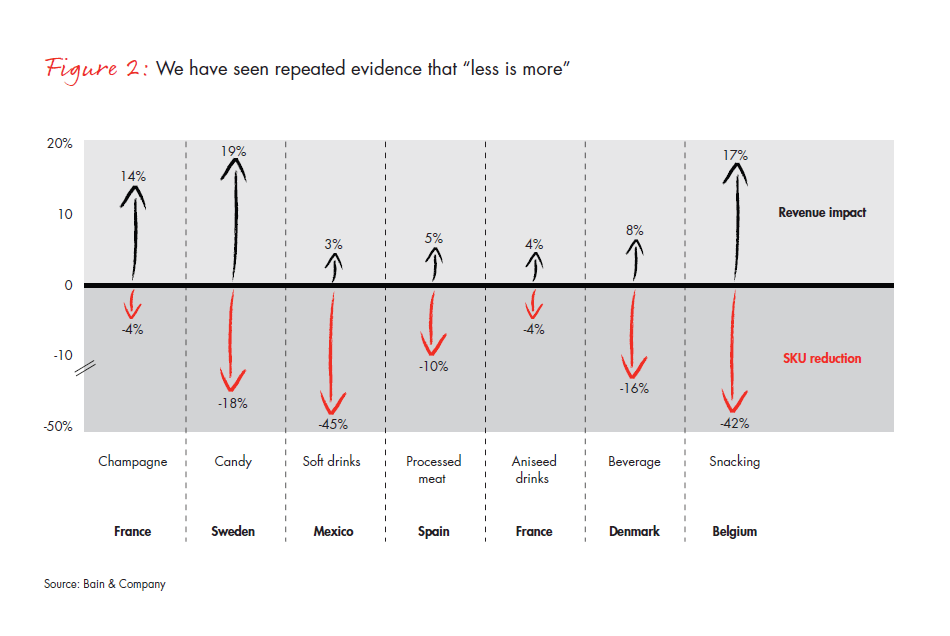Focus & Simplify
Good Jobs Strategy companies have a clear understanding of why their customers choose them and what problems they solve for their customers. They simplify their operations in a way that is consistent with that strategic focus. Focus & Simplify improves employee productivity, minimizes mistakes, lowers costs, and boosts sales. Employees know enough about the products and services in their area to serve customers better and faster. Focus & Simplify reduces confusion that may be caused by too many products or promotions.
Focus & Simplify allows companies to meet employee needs in multiple ways. When employees are more productive and can contribute to increasing sales and reducing costs, the company can pay them more. Simplifying operations and reducing variability allows companies to offer more predictable schedules. Focus & Simplify further increases motivation by showing respect for employees’ time and enabling them to shine in front of their customers.
-
Assess Your Company
Our Good Jobs Diagnostic has 10 questions to assess how well your company embraces Focus & Simplify, including:
1. Is there a strong understanding of the customer, including why they shop with you and the problems you solve?
2. Do you streamline products, promotions and services to satisfy customers and simplify operations?
3. Are last minute changes to product delivery or promotions common in your stores?
4. Do frontline employees know enough about products and services in their area to serve customers well?
-
TommusRhodus is an elite author known for offering high-quality, high-value products backed by timely and personable support. Recognised and awarded by Envato on multiple occasions for producing consistently outstanding products, it's no wonder over 40,000 customers enjoy using TommusRhodus themes.


Focus & Simplify Works with Other Good Jobs Strategy Choices
Focus & Simplify requires more rigor. Companies need to know exactly what customers need. Investing in and Empowering employees and giving them time by Operating with Slack enable companies to hear the voice of the customers and know exactly where to simplify. Standardizing processes also contributes to simplification.
Invest in People further supports Focus & Simplify. Knowledgeable employees can help customers and offer substitutes for missing products or services. High expectations and ownership increase accountability and encourages employees to innovate and to improve service and sales.

TOOL: ATTRIBUTE MAP
The attribute map is a tool used to map the features companies offer in their products and services and see how they relate to what customers actually want. Here, the tool has been used to map Southwest Airlines, a company notable for offering less. Southwest Airlines targets customers who value cheap, reliable flights and friendly service. Thus, they do not focus on features that do not contribute to that mission. They have only one type of aircraft and do not offer on-board amenities such as meals and different classes of service. These choices have enabled Southwest to continue to grow, to pay above-average wages, and to be profitable for 44 straight years.
Learn More » Wharton@WorkCASE STUDY: COSTCO
Costco is a company famous for offering less, yet it has industry-leading customer satisfaction. Instead of spending money on features its customers do not value, it focuses on providing exceptional service and low prices and making active choices about what NOT to offer.
"Its floors are bare cement, its ceiling nothing but stark steel beams and skylights, and most of the newly delivered merchandise sits on the same industrial pallets on which it was shipped. There are no signs or directories, and customers have to pay a membership fee before they can even walk in the door. (Source: CNBC)
Link to NPR Podcast: The Anti-Store

PARADOX OF CHOICE: JAM STUDIES
Sheena Iyengar and Mark Lepper’s famous jam study showed that customers are more willing to buy if they are presented with fewer choices. While there has been some difficulty in consistently replicating the study across many domains, a recent meta-analysis of studies helped to clarify the context in which “offer less” makes sense:
- Choice-set complexity: The items are hard to compare
- Decision-task difficulty: The decision is difficult or the stakes are high
- Preference uncertainty: Customers are unclear about their preferences
- Decision goal: Customers want to make a quick decision
The authors found that if one or more of these criteria are met, it leads to increased “choice overload” and, for a business, that probably means lower sales.

Research: SKU Reduction
Bain & Company did research on how SKU simplification affected businesses and found that “offering less” was good business. Companies that reduced the number of SKUs enjoyed greater revenue and simpler operations.
Learn More » Bain& Company
